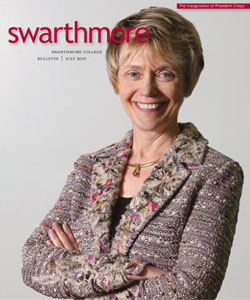“Istanbul Alumni Association”
While reading Jeffrey Lott’s article on the teaching of art history (“A Survey in Progress,” April Bulletin), I came upon a curious reference to “barrel gauging,” which was defined as “the ability to estimate the volume of a container—a vital mercantile skill in an era of nonstandard barrels.” Lott reports that artists of the Renaissance, whose patrons included members of this mercantile class, “both knew of and played to that skill” and that contemporary art historians now consider the so-called “period eye” of the artist when evaluating his or her work. As a retired psychology professor, I found this idea to be of great interest.
The article also featured a large interior view of the Hagia Sophia, which Professor of Art History Michael Cothren—whose intellectual odyssey was the subject of the piece—had encountered in person for the first time while preparing for a recent Alumni College trip there. Seeing that great Istanbul monument set me adrift in my own thoughts.
While at Swarthmore in the early 1950s, I only vaguely allowed myself to register the fact that a number of my fellow students had been “displaced” by Hitler and/or the Holocaust—including a few who had escaped to Istanbul or Ankara. I was in that group: My father was a professor at the Medical School in Istanbul (1933–1938). Recently, while perusing Fritz Neumark’s Zuflucht am Bosporus (Refuge on the Bosporus), I ran across the name Richard Honig. The name rang a bell, so I looked him up in what I call my “Istanbul Alumni Association List.” Sure enough, he had a son named Werner Honig who, I remembered, had graduated from Swarthmore in 1953—two years ahead of me.
Over the years, I have gradually realized that there were several more of us in the same boat, and, on the whole, we found the College a hospitable place. During one of our recent reunions, I wandered into the Friends Historical Library, where I stumbled across an account by a distant cousin of my mother who, shortly after his arrival in the States, had participated for a time in a Quaker-run rural resettlement program in the Midwest. I suspect that he would’ve found the Quaker climate at Swarthmore more to his liking.
Three years ago, I was working on a family memoir of those years in Turkey, drawing largely on family letters, but I stopped when fire destroyed the interior of the building that housed my condo. Perhaps this picture of the Hagia Sophia will inspire me to return to my unfinished opus.
Gerard Lenthall ’55
Pittsburgh, Pa
 Email This Page
Email This Page